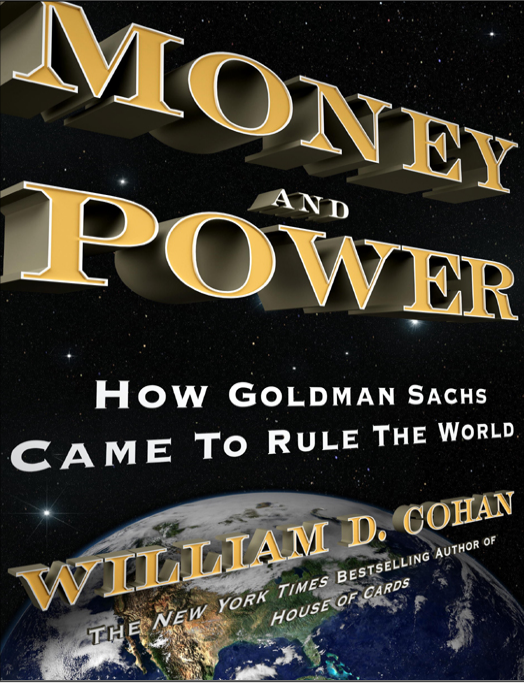Money and Power: How Goldman Sachs Came to Rule the World by William D. Cohan

CHAPTER 1
A FAMILY BUSINESS
What became Goldman Sachs opened its doors in 1869. Like
many of his fellow European Jewish immigrants who later
went on to become successful bankers, when Marcus
Goldman first came to the United States in 1848 from a small village
in central Germany, he became a clothing merchant. This was the
way the Lazards started in New Orleans in 1848, and how the
Lehmans started in Montgomery, Alabama, in 1844. There was no
surprise in this, of course, since owning a store was considered an
“appropriate” occupation for a Jewish immigrant, whereas the
banking profession was reserved for the established—non-Jewish—
elites.
Marcus Goldman first arrived from Burgpreppach, Germany, in
New York City but, according to Stephen Birmingham, the author of
Our Crowd, “he quickly set off for the area that, rightly or wrongly,
young German Jewish immigrants had heard was the peddlers’
paradise, the coal hills of Pennsylvania.” He made the journey from
Germany when he was twenty-seven years old. At first, Goldman
was a peddler, with a horse-drawn cart. But by 1850, according to
the U.S. Census data, Goldman was in Philadelphia, where he
owned a clothing store on Market Street and rented a “comfortable
house” on Green Street. By then, he had met and married Bertha
Goldman (no relation), who had also emigrated from Bavaria in
1848 and settled in Philadelphia with her relatives. Bertha “had
supported herself quite nicely,” according to Birmingham, “doing
embroidery and fine needlework for Philadelphia society women.”
The Goldmans were married when Bertha was nineteen. By 1860,
Goldman had become a merchant, according to the census data, and
had fathered five children, Rebecca, Julius, Rosa, Louisa, and Henry.
He listed on the census the value of his real estate at $6,000 and the
value of his personal estate at $2,000. The Goldmans also employed
two servants.
In 1869 Marcus Goldman moved with his family to New York
City. One of the main reasons for the move was that Bertha
Goldman had had about as much of Philadelphia as she could stand
and urged her husband to move them all north. They settled at 4
West Fourteenth Street. By this time, Goldman had decided to
abandon the clothing business, as had a number of his Jewish peers,
and decided to do what he could to get into the money business.
He started a sole proprietorship, at 30 Pine Street, focused on
buying and selling IOUs from local businessmen. The idea was to
help these small operations turn their accounts receivable into cash
without having to make the arduous trip uptown to a bank.
Goldman’s office was in the cellar of the building, next to a coal
chute and, according to Birmingham, “in these dim quarters he
installed a stool, a desk and wizened part-time bookkeeper (who
worked afternoons for a funeral parlor).” The name on the door:
“Marcus Goldman, Banker and Broker.”
Despite the humble office space, Goldman made sure he looked
the part of an aristocrat. “In what was the standard banker’s
uniform—tall silk hat and Prince Albert frock coat—Marcus
Goldman started off each morning to visit his friends and
acquaintances among the wholesale jewelers in Maiden Lane, and in
the ‘Swamp,’ where the hide and leather merchants were located,”
Birmingham wrote in Our Crowd. “Marcus carried his business in his
hat. He knew a merchant’s chief need: cash. Since rates on loans
from commercial banks were high, one means New York’s small
merchants had of obtaining cash was to sell their promissory notes
or commercial paper to men like Marcus at a discount.” In his
telling, Birmingham likened the “commercial paper” of the day—
unsecured short-term debts—to a postdated check that could only
be cashed six months in the future. Based on prevailing interest
rates and the “time value” of money concept—the idea that one
dollar in hand today is worth more than one dollar in hand six
Money and Power: How Goldman Sachs Came to Rule the World by William D. Cohan




